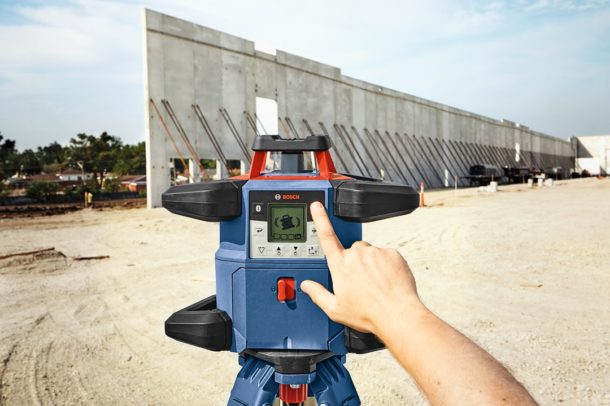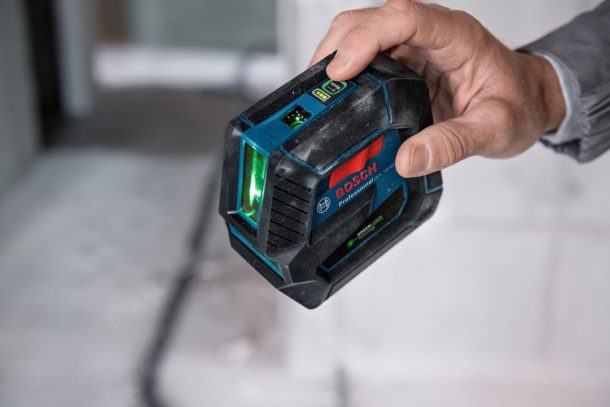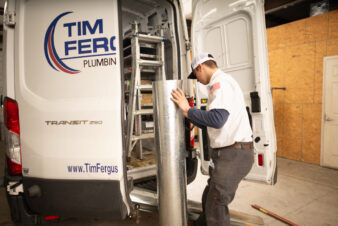Measuring tools are a vital tool in nearly every trade and every phase of construction. Measuring tools are often both the first step and the last step in completing jobs on the worksite. Whether a contractor is using a cross-line laser to align electrical outlets or an estimator using a laser distance measure to calculate area for flooring, nearly all trades are increasing usage of measuring tools. In turn, this increases the need for manufacturers to produce tools that offer enhanced precision, extra durability, and fit into more use cases than ever before. From plumb bobs to box lasers to chalk lines, measuring tools have seen perhaps the largest shift out of any other category of power tools.
Overall, measuring and leveling has become a faster, easier, and more affordable process than ever before. One way to think about the evolution of measuring tools is to compare it to the evolution of cell phones. When we look back at the very first cell phone, its purpose was to make calls. Now, cell phones offer much more than simply the ability to place a call. There’s consistently new iterations of cell phones, updates to applications, and new capabilities that enable users to do more with one device and do it more efficiently. Similarly, we are continually learning about new ways that measuring tools are being used on jobsites, offering us insight on how to make these tools as useful as possible.

For starters, the laser technology used in measuring tools has improved tremendously with the shift from red beam lasers to green beam lasers in the past five years or so. Green is a color more visible to the human eye and thus scientifically, we can see the green beam laser better than red. In some environments where you might have ambient light shining onto the workspace, having additional visibility on the job site and longer ranges of laser light to work with is vital.
We have also seen a shift in producing measuring tools to be more compact, yet more durable, than ever before. As a direct result of listening to user feedback, manufacturers have begun to ensure that a measuring tool on the jobsite is built just as tough as the job itself, but also compact enough to ensure portability. We now see measuring tools that can fit in a tool belt or a case that is easily transported on a person, or alongside them as they move through their day. And it’s worth mentioning that these newer compact tools still carry great accuracy in their small package.
With the measuring tools market expanding to serve increasingly more trades and industries, we have also seen additional capabilities arise depending on the use. For example, a new high-end rotary laser might now offer UCAL, or user calibration. This is a way to connect the tool to a smart device and allow the user to calibrate their laser on site. This is especially useful in cases where a rotary laser, which is stood upright, can potentially get knocked out of place or slightly shifted. With UCAL, users can do their own accuracy check to ensure they are always working off of a level benchmark. Another similar tool capability on the rise is the option for connectivity, which has become an absolute necessity in the measuring tools category. Added connectivity to smart devices allows users to document their work digitally and immediately transfer detailed and accurate measurements off to a coworker or an office. The ability to document measurements in this way has created meaningful ecosystems and provided insight into how manufacturers can make measuring tools even more useful and accurate, and ultimately increase productivity on the jobsite.

Overall, throughout the past 5-10 years measuring tools have become more accurate, useful, and durable than ever before. And new technological advances have allowed measuring tools to become fast, easier, and more efficient. With the growth of the measuring tool market and increase in overall demand, these tools have also become more cost-effective. A large range of use cases for measuring tools means there can be a tool for every job. We envision a world in which every user has a measuring tool that fits their individualized needs on the jobsite – and we are certainly up for the challenge to get them there.
 By Linda Tait, Business Unit Director, Measuring Tools at Bosch Power Tools
By Linda Tait, Business Unit Director, Measuring Tools at Bosch Power Tools




Join the conversation: